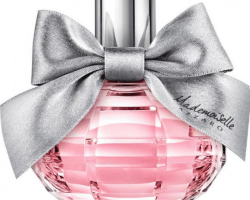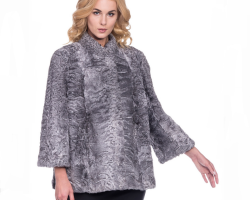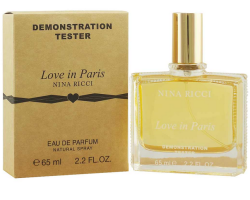Useful tips for beginners relative to knitting berets with knitting needles and crochet.
Content
- How to knit the bottom and elastic band of the beret with knitting needles?
- Knitting a beret with knitting needles for beginners: a detailed description
- The female simple berets with a description for beginners
- Children's beret for beginners
- Knitting patterns for berets: schemes and description
- The size of the bottom of the beret Crochet: How not to be mistaken in size?
- Video: hook for beginners - knitting a circle
- Crochet elastic band: Description
- Video: Crochet elastic band. Knitting methods
- Crochet beret for beginners: detailed description
- Video: Classical Crochet
- Crochet summer: scheme and description for beginners
- Crochet children for beginners
- Video: how to crochet a children's summer. How to Crochet Beret Free Pattern Tutorial #crochet_Beret
- Crochet pattern for beret: scheme and description
- How to tie it crochet for beginners: video
- Video: Summer crochet for beginners 1 part crochet
- Video: The summer berets for beginners 2 partly beret beret?
How to knit the bottom and elastic band of the beret with knitting needles?
It takes, like any other headdress, you can tie in two ways:
- from the elastic band
- from the bottom (crown, pancake).
How to knit an elastic band of beret with knitting needles?
- Measure the head of the head (OG).
- Tie a sample (20 loops x 20 rows) and determine the density of knitting (PV).
- Determine the number of loops for the elastic band of the beret: (OG-4 cm)*PV, where 4 cm is a standard decrease for the canvas tied with knitting needles.
How to tie the bottom of the beret with knitting needles?
- Measure the head of the head (OG).
- Determine the diameter of the bottom: OG/2.
- Type 6 (8) loops on knitting needles.
- Knit the 1st row alternately: 1 front loop, cloak.
- Divide the resulting number of loops into 6 (8) wedges.
- Continue work, adding loops in every 2nd row at the beginning and at the end of each wedge. Make sure that the bottom of the beret remains flat. If necessary, make an increase less often (for example, in every 4th row).
Knitting a beret with knitting needles for beginners: a detailed description
Do you know how to knit front loops and make crochet? Then tie a fashionable headdress to you is quite affordable.
Knitting beret from the crown

The size of the beret (\u003d headlight):56.
You will need to work:
- Yarn a rovnitsa. Composition: 100% wool. Weight - 100 g, meter - 100 m. For work, you will need a thread in one addition. Melange yarn will look great in this product.
- Sleeps are straight or circular #2.5
- Circular knitting needles #5
Abbreviations that are used in the description:
KP - brown loop
IP - wrong loop
LP - front loop
LSP - facial crossed loop (see photo below)
MP - marked loop
2PLP - 2 loops together with the front with an inclination to the right
2 PVL - 2 loops together with a front with a slope to the left
N - cloak
Pr - turning row



The main pattern: patch knitting. All pr are knitted.
Finishing: gum 2x2 (1x1).
Work description:
- Type 7 loops on the knitting needles #5.
- Tie the bottom (pancake) of the beret:
1st pr: KP, *n, lp. Repeat from * to the end of the pr. Last KP. After adding on the spoke - 13 loops.
2nd and all even pr: LP, N is knitted by LSP.
3rd pr: knit as 1st pr. After adding on the spoke - 25 loops.
Tip: At this stage, in order to avoid errors and to form neat even wedges, mark every 4th loop in any convenient way (for example, with a colored thread or an English pin). After marking in your spoke: KP, 1 loop, MP, 3 loops, MP, 3 loops, MP, 3 loops, MP, 3 loops, MP, 3 loops, MP, 1 loop, Communist Party. Marked loops (MP) - 6. In the future, marked loops are knitted with the main pattern.
Important: during work, make sure that the bottom is flat.
5th pr: KP, 1 LP, N, MP, N, 3 LP, N, MP, N, 3 L, N, MP, N, 3 L, N, MP, N, 3 L, N, MP, N, 3 l, n, MP, n, 1 lp, kp. After adding on the spoke - 37 loops.
7th pr: kp, 2 lp, n, MP, 5 lp, n, MP, N, 5 LP, N, MP, N, 5 LP, N, MP, N, 5 LP, N, MP, N, 5 LP, H, MP, N, 2 LP, KP. After adding on the spoke - 49 loops.
9th PR: KP, 3 LP, MP, N, 7 LP, N, MP, N, 7 LP, N, MP, N, 7 LP, N, MP, N, 7 LP, N, MP, N, 7 LP, H, MP, N, 3 LP, KP. After adding on the spoke - 61 loops.
11th PR: It is knitted without increases.
13th PR: KP, 4 LP, MP, N, 9 LP, N, MP, N, 9 LP, N, MP, N, 9 LP, N, MP, N, 9 LP, N, MP, N, 9 LP, H, MP, N, 4 LP, KP. After adding on the spoke - 73 loops.
15th PR: It is knitted without increases.
17th pr: kp, 5 lp, MP, N, 11 lp, n, MP, N, 11 LP, N, MP, N, 11 LP, N, MP, N, 11 LP, N, MP, N, 11 LP, H, MP, N, 5 LP, KP. After adding on the spoke - 85 loops.
19th PR: It is knitted without increases.
21st PR: KP, 6 LP, MP, N, 13 LP, N, MP, N, 13 LP, N, MP, N, 13 LP, N, MP, N, 13 LP, N, MP, N, 13 LP, H, MP, N, 6 LP, KP. After adding on the spoke - 97 loops.
23rd PR: It is knitted without increases.
25th pr: KP, 7 LP, MP, N, 15 LP, N, MP, N, 15 LP, N, MP, N, 15 LP, N, MP, N, 15 LP, N, MP, N, 15 LP, H, MP, N, 7 LP, KP. After adding on the spoke - 109 loops.
27th PR: It is knitted without increases.
29th pr: KP, 8 LP, MP, N, 17 LP, N, MP, N, 17 LP, N, MP, N, 17 LP, N, MP, N, 17 LP, N, MP, N, 17 LP, H, MP, N, 8 LP, KP. After adding on the spoke - 121 loops.
31st PR: It is knitted without increases.
29th pr: KP, 9 LP, MP, N, 19 LP, N, MP, N, 19 LP, N, MP, N, 19 LP, N, MP, N, 19 LP, N, MP, N, 19 LP, H, MP, N, 9 LP, cp. After adding on the spoke - 133 loops.
30th pr: All facial.
The height of one wedge is 14 cm (from the beginning of knitting to the 30th PR). The width of one wedge (22 loops) is 15 cm. As soon as you have reached the indicated values \u200b\u200b- the bottom of the headdress is ready.
- Stitch 2-3 cm (4-6 rows) without increments. If you want a more magnificent beret, increase the number of rows knitted without increments to 8-10 (4-5 cm).
- To decorate the lower part of the beret, start the reduction of the loops:
35th pr: kp, 8 pl, 2 pvl, MP, 2 pvlp, 17 lp, 2 pvl, MP, 2 pvlp, 17 lp, 2 pvl, MP, 2 pvlp, 17 lp, 2 pvl, MP, 2 pvlp , 17 LP, 2 PVL, MP, 2 PVLP, 17 LP, 2 PVL, MP, 2 PVLP, 8 lp, kp. After decreasing on the spoke - 121 loops.
36th PR and all subsequent even rows are knitted by the LP.
37th PR: It is knitted without decreases.
39th pr: kp, 7 pl, 2 pvl, MP, 2 pvlp, 15 lp, 2 pvl, MP, 2 pvlp, 15 lp, 2 pvl, MP, 2 pvlp, 15 lp, 2 pvl, MP, 2 pvlp , 15 lp, 2 PVL, MP, 2 PVLP, 15 LP, 2 PVL, MP, 2 PVLP, 7 lp, kp. After decreasing on the spoke - 109 loops.
41st PR: It is knitted without decreases.
43rd pr: kp, 6 pl, 2 pvl, MP, 2 pvlp, 13 lp, 2 pvl, MP, 2 pvlp, 13 lp, 2 pvl, MP, 2 pvlp, 13 lp, 2 pvl, MP, 2 pvlp , 13 LP, 2 PVL, MP, 2 PVLP, 13 LP, 2 PVL, MP, 2 PVLP, 6 lp, kp. After decreasing on the spoke - 97 loops.
45th PR: It is knitted without decreases.
47-1 pr: kp, 5 pl, 2 pvl, MP, 2 pvlp, 11 lp, 2 pvl, MP, 2 pvlp, 11 lp, 2 pvl, MP, 2 pvlp, 11 lp, 2 pvl, MP, 2 pvlp , 11 LP, 2 PVL, MP, 2 PVLP, 11 LP, 2 PVL, MP, 2 PVLP, 1 LP, KP. After decreasing on the spoke - 85 loops.
48th pr, knit a lp.
- Start the design of the beret rim. To do this, go to the knitting needles #2.5 and knit 2x2 (1x1) 4 cm with an elastic band. Close the loops.
- Sew the product on the wrong side.
Knitting beret with knitting gum

The size of the beret (\u003d headlight):56.
You will need to work:
- Yarn, composition: 50% wool, 50% acrylic. Weight - 60 g. For work, you will need a thread in one addition. Melange yarn will look great in this product.
- Sleeps are straight or circular #2.5
- Circular knitting needles #4.5
- Knitting hook #2.5
Abbreviations that are used in the description:
KP - brown loop
IP - wrong loop
LP - front loop
LSP - facial crossed loop (see photo above)
MP - marked loop
2 PVL - 2 loops together with a front with a slope to the left
N - cloak
Kr - circular row
The main pattern: front surface. All kr are knitted with LP.
Finishing: gum 2x2 (1x1).
Work description:
- Dial 128 loops on the knitting needles #2.5 Close the set row in the circle.

Important: be sure to check the location of the set loops before knitting the first row. The loops should be inside the conditional circle. If necessary, eliminate the crossings of the row.
- Knit 2x2 (or 1x1) frontal hoop with an elastic band. The height of the part is 2 cm (8 rows).

- As soon as the gum has reached the necessary height, go to the front surface and add 24 loops evenly. To do this, make a cloak every 5 LP. After adding on knitting needles - 152 loops. In the next Kr Nakida, knit LSP.
- Continue to knit all subsequent KR, until the height of the knitting reaches 10 cm from the beginning of the set edge. So you will form a high -altitude part of the beret (tulia).

- As soon as the high -altitude part reaches the required value, proceed to the formation of the crown (bottom) of the beret. To do this, march with a colored thread every 19th loop of the cr. You should get 8 identical parts that will become the future wedges of the beret. Knit alternately: 17 LP, 2 PVL and so to the end of the cr. The next kr after decrease, knit the LP.

- Continue the decrease of the loops, focusing on the MP and gradually reducing the wedge of the beret

- When 16 loops remain on the spoke, knit them in pairs of 2 PVLs.

- Collect the remaining loops on the thread, tighten the thread and fix the node. If desired, decorate with a loop. For a loop: tie a chain of 8 air loops, fix it at the base and tie with a crochet with columns.

The female simple berets with a description for beginners
Takes with openwork leaves: it fits simply - it looks amazing. We proceed.

The size of the beret (\u003d headlight):53.
You will need to work:
- Yarn, composition: 50% cotton, 50% bamboo. Weight - 100 g, meter - 238 m. For work, you will need a thread in one addition. The change of color for the leaves will look great in this product, however, it looks elegant in monophonic.
- Sleeps are straight or circular #3
Abbreviations that are used in the description:
KP - brown loop
IP - wrong loop
LP - front loop
LSP - facial crossed loop (see photo above)
MP - marked loop
2PLP - 2 loops together with the front with an inclination to the right (see the beginning of the article)
2 PVL - 2 loops together the front with a slope to the left (see the beginning of the article)
3 PVL - three loops together with the front (see photo below)
PPP - a loop added from the broach (knitted by the front cross)
N - cloak
Pr - turning row
Kr - circular row

Pattern "leaves": knit according to the scheme.

Finishing: gum 2x2 (1x1).
Work description:
- This model is knitted from the bottom up, i.e. Start work with a set of loops for a beret elastic band. Pick up 120 loops on the knitting needles and closed the set row in a circle.
Important: be sure to check the location of the set loops before knitting the first row. The loops should be inside the conditional circle. If necessary, eliminate the crossings of the row.
- Knit 2x2 (or 1x1) frontal hoop with an elastic band. The height of the part 3 cm.
- To form a free high -altitude part of the beret, make the following:
- mark with any comfortable marker (for example, with colored thread) a 10th loop from the beginning and from the end of the KR;
- the first 10 loops of the KR are knitted (including the marked loop of MP);
- next, knit one by one: 2 lp, and so on to the MP;
- the last 10 loops of the KR are knitted (including MP);
- remove markers.
After adding on knitting needles - 170 loops.
- Knit the next kr, knit the crochet LSPs.
- For the installation of the high -altitude part of the beret:
- from the beginning of the KR, knit 52 LP (mark the 52nd loop with a marker)
- tie the 1st row according to the scheme of the “leaves” pattern, mark the last loop of the pattern with a marker
- knit lp to the end of the cr.
- Continue to knit a high -altitude part, focusing on the pattern of the pattern and the pattern of the canvas. The height of the motive with leaves is 40 kr. After the end of work on the motive on the knitting needles - 150 loops. Please note: blue in the scheme - "no loop." Blue squares when reading the scheme are not taken into account. This technique is used so that symmetry is not disturbed in the graphic image of the circuit.
- At the end of work with the “leaves” motive, remove the markers and, if necessary, knit all subsequent Kyrgyz Republics, until the height of the canvas reaches 18 cm (from the beginning of the setting edge).
- Start the formation of the crown (bottom) of the beret. For this
- 1st CR of Utanits: The 1st and 2nd Loop of the KR, knit 2PLP, 11 LP, 14th and 15th loop, knit 2 pvl. So you will form the first wedge of the beret. Continue decrease until you form 10 wedges. At the end of the Kr on knitting needles - 130 loops.
- The 2nd Kyrgyz Republic-only LP.
- 3rd Kyrgyz Republics: the 1st and 2nd loop of the wedge, knit 2PLP, 9 LP, 12th and 13th loop, knit 2 pvl. Make decrease for all wedges. At the end of the Kr on knitting needles - 110 loops.
- 4th Kyrgyz Republics-only LP.
- 5th CR of Utanits: The 1st and 2nd Linge of the wedge knit 2PLP, 7 LP, 10th and 11th loop of the wedge, knit 2 pvl. Make decrease for all wedges. At the end of the Kr on knitting needles - 90 loops.
- 6th Kyrgyz Republics-only LP.
- The 7th Kyrgyz Republics: the 1st and 2nd loop of the wedge, knit 2PLP, 5 LP, 8th and 9th loop of the wedge, knit 2 PVL. Make decrease for all wedges. At the end of the Kr on knitting needles - 70 loops.
- 8th Kyrgyz Republics-only LP.
- The 9th Kyrgyz Republic of Ratches: the 1st and 2nd loop of the wedge, knit 2PLP, 3 lp, 6th and 7th wedge loop, knit 2 pvl. Make decrease for all wedges. At the end of the Kr on knitting needles - 50 loops.
- 10th Kyrgyz Republics-only LP.
- The 11th Kyrgyz Republics: 1 and 2nd loop of the wedge, knit 2PLP, 1 LP, 4th and 5th loop of the wedge, knit 2 PVL. Make decrease for all wedges. At the end of the Kr on knitting needles - 30 loops.
- 12th Kyrgyz Republic after decreases-only LP.
- 13th Kyrgyz Republics: Knit alternately 1 LP, 2PLL and so to the end of the cr. At the end of the Kr on knitting needles - 20 loops.
- 14th Kyrgyz Republics-only LP.
- 15th Kyrgyz Republics: Knit alternately 1 LP, 2PLL and so to the end of the cr. At the end of the Kr on knitting needles - 10 loops.
- 16th Kyrgyz Republics-only LP.
- 17th Kyrgyz Republics: Knit alternately 1 LP, 2PLL and so to the end of the cr. At the end of the Kr on knitting needles - 5 loops.
- Cut the working thread, collect the remaining loops on it, pull it out, fix it.
Children's beret for beginners
Berets are particularly popular with charming princesses of all ages. However, the young brave berets are very to the face.
The schemes below are simple in execution and do not limit the imagination in choosing a color scheme or decor.
Takes with pompon

Beret size (\u003d child's age):2/4 (6/8) 10/12 years.
The width of the beret on the head of the head: 41 (46) 51 cm.
You will need to work:
- Yarn, composition: 100% wool. Weight - 100 g, meter - 23 ° M. For work, you will need a thread in one addition.
- Sleeps are straight or circular #3, #3.5
Abbreviations that are used in the description:
Pr - turning row
LP - front loop
IP - wrong loop
N - cloak
ISP - wrongly crossed loop (see photo below)
2PLP - 2 loops together with the front with an inclination to the right (see the beginning of the article)
2 PVL - 2 loops together the front with a slope to the left (see the beginning of the article)

The main pattern:
- payer knitting. All pr are knitted.
- facial knitting. The front ranks - LP, the wrong rows - IP.
Work description:
Be careful: the description is given for three age categories 2/4 (6/8) 10/12 years!
You can tie a plain beret or its striped version - it all depends on your personal preferences.
- Beret is knitting down from the bottom up, i.e. Start work with a set of loops for a beret rim. Take 98 (110) 122 loops on the knitting needles. Tie with a prying rim of 2 (3) 4 cm. Work pr.
- Go to the knitting needles #3.5. Continue the work with a front viscous (rows of rotary). Follow the formation of a beret tula:
- 1st pruto: 8 (9) 10 lp,*n, 2 lp, n, 14 (16) 18 lp. Repeat from * to *. Finish PR: N, 8 (9) 10 lp. After adding on the spoke - 110 (122) 134 loops.
- 2nd prute: IP. If you do not like openwork holes at the scene of the crochets, knit the crochets of the poppies.
- 3rd pruto: 9 (10) 11 lp, *n, 2 lp, n, 16 (18) 20 lp *. Repeat from * to *. Finish PR: N, 9 (10) 11 lp. After adding on the spoke - 122 (134) 146 loops.
- The 4th and all subsequent even increases, knit as the 2nd pr.
- In total, perform 7 (9) 11 pruts, adding a loop on both sides of the tracks from 2 lp.
- After the last prut, knit 3 pr without increasing, focusing on the knitting pattern.
- To form the crown (bottom) of the beret, continue to work PR with decreases:
- 1st prison prior: Before the track of 2 LP, knit 2 PVL, and after a path of 2 lp-2 PVLP.
- 2nd, 3rd, 4th pr: without reduction; Knit, focusing on the drawing of the canvas (the wrong side - IP, front - LP).
- 5th prison: knit in the same way as the 1st pr.
- 6th, 7th, 8th pr: without decreases.
- Reduce the loops in every 4th pr (see the description above) until 15 (16) 17 loops are left on the knitting needle.
- Cut the working thread, stretch it through the remaining loops, fix the thread.
- Sew it beret. If desired, make a decorative loop or sew a pompom.
Warm beret with braids


Takes with an openwork pattern for the smallest


Knitting patterns for berets: schemes and description
Berets are always in fashion. Only accessories change to them: scarves give way to snoods, and gloves to mittens.





The size of the bottom of the beret Crochet: How not to be mistaken in size?
- Measure the head of the head (OG).
- Determine the diameter of the bottom: OG/2.
Make sure that the bottom of the beret remains flat.

Video: hook for beginners - knitting a circle
Crochet elastic band: Description
The gum associated with crocheted is not at all inferior to the elastic band connected by knitting needles. Carefully view the video “Glapse of Crochet. Methods of knitting ”, in which all the stages of knitting are extremely clearly explained.
Video: Crochet elastic band. Knitting methods
Crochet beret for beginners: detailed description
Crochet can be tied, using only crochet columns in work.

The video “takes a classic hook” offers a detailed MK to knit a stylish headdress.
Video: Classical Crochet
Crochet summer: scheme and description for beginners



Crochet children for beginners

Experienced craftswomen advise knitting the bottom of the beret according to any round scheme you like. As soon as the bottom of the beret reaches the required diameter, knit a few centimeters with crochet columns, make uniform declining and end with an elastic band.
The video “How to tie a children's summer beret. How to Crochet Beret Free Pattern Tutorial #CroChet_BERET ”offers a detailed MK to knit a children's beret from the craftswoman Victoria Isakina.

Video: how to crochet a children's summer. How to Crochet Beret Free Pattern Tutorial #crochet_Beret
Crochet pattern for beret: scheme and description
Simple in execution and, at the same time, a very stylish beret.

How to tie it crochet for beginners: video
MK video is a wonderful opportunity for inexperienced craftswomen to master new techniques and create beautiful things with your own hands.







